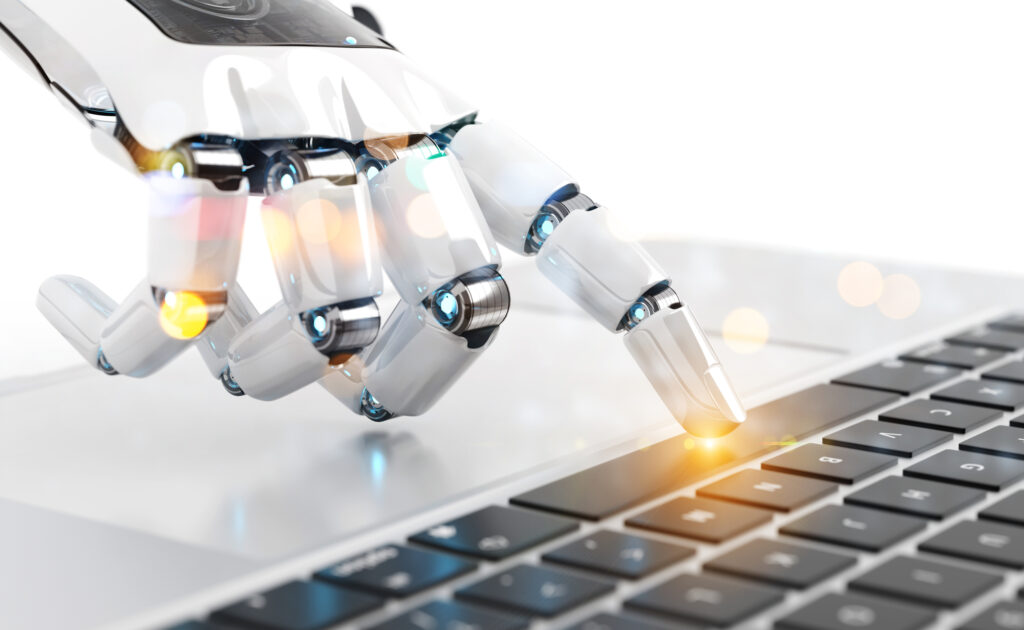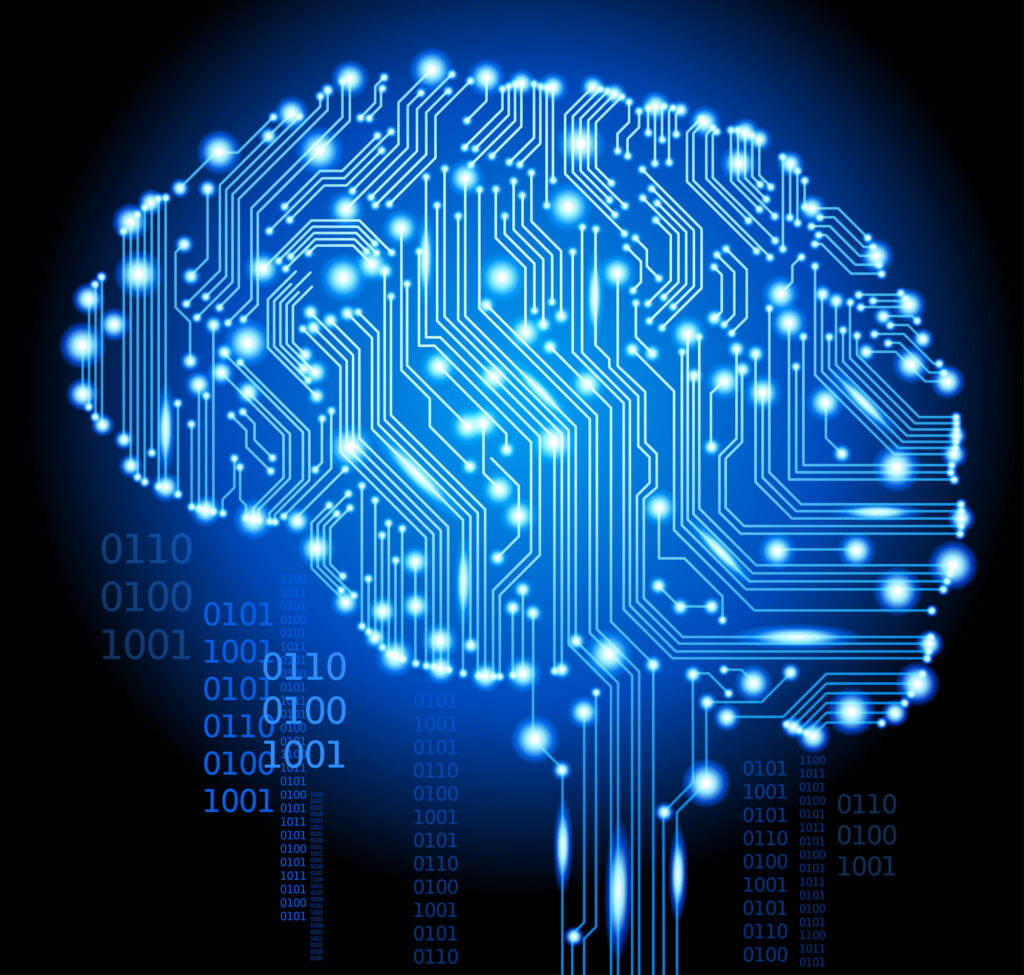Artificial Intelligence has had a significant impact on the way that businesses manage their daily workflows and operate. Diverse AI tools and applications have enabled businesses to automate repetitive tasks and make better decisions, resulting in more efficient and effective operations. While there are many AI algorithms, generative AI is gaining popularity across all industries.
Businesses can now generate content and ideas faster than ever thanks to the popularity of generative AI tools such as Midjourney or ChatGPT. It improves decision-making, streamlines business operations, and helps businesses stay competitive by developing new products and services. In 2023, the potential of generative AI will be widely recognized.
Let’s look at the various applications and use cases of generative AI in different industries.
- Generative AI models
- Use Cases for Generative AI
- Popular Generative AI Applications across Industries

What is Generative AI (Generative Artificial Intelligence)?
Generative AI, a subfield in Artificial intelligence, uses Machine Learning techniques such as unsupervised learning algorithms to create content like digital video, images, audio, texts, or codes. Unsupervised learning involves training the model on a dataset that does not have labeled results. The model has to discover patterns and structures without human assistance. Generative AI is a method of using generative AI to examine data and create new, original content.
Generative AI uses sophisticated algorithms to analyze data and generate novel and unique insights. This improves decision-making, and streamlines operations. By creating tailored products and services, generative AI helps businesses remain competitive in a market that is constantly changing.
Generative AI allows computers to generate new content by abstracting patterns from input data.
Generative AI models
Generative AI is usually created by using a deep-learning model trained on a set of images. The model can then be used to create new pictures. It uses several Generative models such as BERT, Transformer, and Autoregressive. Generative Adversarial Networks and Variational autoencoders are the two most popular generative AI models.
A GAN is composed of two components: a Generator and a Discriminator. The generator is taught to create new images that are similar to those in the set of training images, while the discriminator learns to distinguish between the real images and the fake images created by the generator. In a process known as adversarial, the generator and discriminator train together. During the training, the generator attempts to create images that will fool the discriminator. The discriminator tries to detect counterfeit images accurately. With time, the generator becomes more accurate and creates more realistic images.
VAEs work differently. They learn probabilistic mappings from a higher-dimensional input like a photo to a lower-dimensional, unrevealed, space, and then return to the original space. The VAE learns from a large set of pictures to determine the probability distribution. The model can create new images by mapping samples back to their original space after training.
Once trained, GAN or VAE models can create a new image or content, that is similar to the images or contents in the training set. This technology can be used to create realistic computer-generated pictures, refine low-quality images, and draw new images based on text descriptions.
Let’s look at the uses of Generative AI now that we understand how it works.
Use Cases for Generative AI
Use cases for generative AI are classified based on what it produces, whether that is visuals, audio, texts, or codes. We will explore Generative AI cases that pertain to each of these domains.
Use Cases in Visual Content
1. Image enhancement and generation
Text-to-image tools are the most common for AI-generated image generation. The tool can be used to create realistic images by allowing users to enter text that describes the images they desire. The AI tool will create stunning images according to your requirements. Users can specify the subject, style, location, or object.
There are also tools for image enhancement, which can be used to modify existing images. It can perform the following functions:
- Image Completion: AI Tools with this ability can generate missing parts in an image. For example, they can create a realistic backdrop for an object or fill in missing pixels.
- Semantic Image-to-Photo Translation: It is a process of creating a photorealistic version based on an image or sketch.
- Image manipulation involves modifying an image to alter its external elements, such as style, lighting, or color while maintaining the original elements.
- Image super-resolution: Tools with this capability can increase the resolution of images without affecting their specific details. Users can, for example, improve the quality of an image captured by CCTV.
Midjourney, DALL.E, and other AI-based tools for image generation are examples.
2. Video Creation
Generative AI simplifies video production through more flexible and efficient tools that generate high-quality content. It can automate repetitive tasks such as video composition, adding special effects, and animation. AI tools can be used to create videos, similar to the image generation process. They can also be used for video editing, video resolution enhancement, and video completion. They can also perform these tasks:
- Video Prediction: It involves predicting future frames of a video using generative models, such as characters or objects moving in a particular scene. It can recognize the spatial and temporal elements of a video, and then produce a sequence using that information.
- Video Style Transfer: AI generators that have this feature can create a video that is similar to the style of another video or an image.
3. 3D shape generation
Generative AI can be used for creating 3D models and shapes using a generative AI tool. This can be done using various techniques such as VAEs or GANs. AI tools that generate 3D shapes are useful for creating complex shapes which might not be possible to create manually. This technology can be used to improve the performance of 3D tasks such as 3D printing and 3D scanning, or virtual reality.
Use cases of Generative AI in audio generation

1. Music creation
Generative AIs can be used to create new music. The tools that use AI to generate music can learn the patterns and styles in input music, and create new compositions. These tools are useful for advertising or other creative purposes. However, copyright infringement remains an issue when artwork that is protected by copyright is used in training data.
2. Text-to-speech generators
A GAN-based generator of TTS can produce realistic audio speech from text written by the user. AI tools like these allow discriminators to act as trainers who can modulate the voice and emphasize the tone to achieve realistic results.
TTS AI trains machine learning models using extensive speech and text data. These models can be tuned to produce high-quality text-to-speech. AI-based tools for speech-to-text are used by a variety of applications including speech-enabled technology, speech-based user interfaces, and assistive technology.
3. Speech-to-speech (STS) conversion
Generative AI is used in audio-related AI applications to generate new voices from existing audio files. Using STS conversion, the film and gaming industry can quickly and easily create voiceovers.
Text generation
Since its launch, text-generative AI platforms such as ChatGPT are becoming increasingly popular. These platforms are very efficient at generating content such as articles, blog posts, summarizing texts, translating languages or automatically creating a text. The systems are trained using large data sets to produce authentic and up-to-date content.
Text-generation AI uses the Natural Language Processing and Natural Language Understanding techniques of AI. They read text, understand context and intent and then produce intelligent responses for the user. These tools are trained using large data sets to produce authentic and updated content.
Text-generating AI tools are capable of performing a wide range of language-related tasks, including answering questions, completing incomplete texts, classifying the text into different categories, and engaging in humanlike discussions. Text generation models that use generative AI can be used for:
- Creative Writing: This can be used to create a fictional piece such as a story, song lyrics, or poetry.
- Conversational Agents: Generative artificial intelligence models can be used for the development of virtual assistants or chatbots which can respond automatically to user questions and have natural conversations.
- Translation Generative Artificial Intelligence models can quickly and accurately translate texts from one language into another.
- Marketing & Advertising: Marketing & advertising materials such as product descriptions, copy for social media promotions, catchphrases, and ad copies can be created.
Code generation
The ability of Generative AI to generate code automatically without manual coding can be used to leverage it in software development. These models automate the software creation process and reduce the time and effort developers spend writing, testing, and fixing code. AI models that generate code can perform the following tasks:
- Code completionCompleting code snippets are simple with models that use generative AI, such as ChatGPT. These models analyze the context to suggest the next code line.
- Code Generation: Due to its natural-language capabilities, an AI generative model can convert a text prompt into codes.
- Test Case Generation: Generative AI Models can create test cases that can be used to evaluate the software and confirm its functionality.
- Automated bug-fixing: Developers enter the code in a generative AI model, like GPT. The tool then identifies the bugs and fixes them.
- Model Integration: With the generative AI approach, developers can quickly and easily implement machine learning models into their software, based on specific models, such as neural networks or decisions.

Collaboration
The latest advances in generative AI can be used to automate personal productivity tools such as email and word processors, improving efficiency and accuracy. Microsoft’s use of GPT-3.5 as part of its premium version of Teams is a notable example of generative AI. This powerful tool enhances the recording of meetings by automatically dividing them into sections, creating titles, and adding personal markers. The tool can highlight specific mentions to make it easier to locate the most important sections of the conversation.
That’s not it. Jesper.ai, a start-up, takes automation to a new level with its AI-powered Word Processor. This revolutionary tool replaces the tedious writing tasks of marketing copy and job descriptions with this revolutionary technology that generates text automatically. With generative AI collaboration and productivity will soar, allowing you to focus on more strategic and creative endeavors.
Enterprise search
Enterprise search, also known as generative AI, can help companies locate information within their documents more quickly. Generative AI can securely read all documents of a business, including research reports and contracts, before answering questions. It can also highlight the most important parts of documents. It can also help employees learn more about the company and better share information.
Knowledge Management
The use of AI models that summarize and cite sources is revolutionizing how we deal with long documents and data. It doesn’t end there. These models can generate new content including data analytics in charts and graphs that can be seamlessly assembled using various systems of records. Businesses can use generative AI to streamline operations, save resources and time, and uncover new insights hidden in mountains or data.
Popular applications of Generative AI across industries
Generative AI has been used in a variety of industries, including:
Entertainment
Generative AI has many applications in the entertainment industry. Generative AI is a powerful tool that can be used in fashion, film, music, and gaming. Generative AI can be used to remix songs and create new ones. AI tools can be used to create new videos, including animations and complete movies. Video editing is simplified and time-saving for social media influencers and content creators.
Generative AI is a boon to the gaming industry. Generative AI creates new characters, storylines, and levels to ensure a rewarding gaming experience. Generative AI can be used to create new characters, environments, and interactions for Virtual Reality games. This will increase engagement and appeal. Developers can create new games more easily with the help of ready-made tools, blueprints, and frameworks. Traditionally, this would have required building everything from scratch. AI tools can also be used to create realistic voices that are similar to human voices. This is useful for creating video game avatars or animations.
Finance
Generative AI can be used by Fintech companies to automate repetitive tasks and improve productivity. Generative AI in finance can be used to:
- Fraud detection: Generative artificial intelligence can be used to detect fraud by analyzing large amounts of data.
- Credit Scoring: Generative Artificial Intelligence can analyze data like income, employment history, and credit history to predict creditworthiness.
- Risk Management: GenerativeAI can manage credit risks, market risks, and operational risks by analyzing historic data and identifying patterns that indicate future risks.
- Robotic Process Automation: Generative Artificial Intelligence can increase efficiency by automating repetitive tasks such as data entry and compliance checking.
- Portfolio Management: Generative Artificial Intelligence has the potential of helping optimize investment portfolios, and find the best investment opportunities, while considering risk, return, and volatility, when analyzing data from the market.
- Trading: With generative AI trading strategies can generated and executed based on market conditions and historical information.
- Pricing Optimization: Generative Artificial Intelligence can optimize pricing strategies of financial products such as loans or insurance policies by analyzing historical data and market conditions.

Healthcare
It is impossible to overstate the importance of Generative AI for the healthcare industry. Generative AI helps radiologists detect cancer, heart disease, and neurological disorders using medical images such as X-rays, CT scanners, and MRIs. Diagnoses are made more accurately, and there is less chance of them being missed or delayed. Natural Language Processing (NLP) is used by generative AI to analyze large unstructured datasets like Electronic Health Records (EHRs). This allows them to find useful information that can assist doctors with diagnosis and treatment decisions.
Generative AI can be used to recommend personalized treatment plans based on the medical history, genetics, and lifestyle of a patient. In turn, treatment efficacy can be increased and adverse reactions reduced. Generative AI is also useful for pharmaceutical companies to analyze data on side effects, drug interactions, and efficacy. This can help with drug discovery and repurposing.
Manufacturing
Generative AI can be used in manufacturing to benefit it in many ways. It optimizes the production process. For example, generative AI could be used to analyze machine sensor data to forecast when failures are most likely to happen. Equipment manufacturers can plan maintenance and repair to reduce downtime and improve overall equipment performance. Generative AI is also used to identify patterns in production data, which can be used for boosting productivity, lowering costs, and improving efficiency.
By analyzing machine sensor data to identify patterns that may indicate possible product defects, generative AI can enhance the quality of products. This allows manufacturers to fix any problems before the products are sent to customers. It reduces the risk of product recalls, and improves customer satisfaction.
Generative AI is also useful in robotics, automation, and material handling. It can predict the best paths for robots, identify the most efficient ways to move materials and manipulate them, and control and optimize robots’ performance. It can be used to improve manufacturing processes, reduce accidents and increase efficiency.
Real estate
The full potential of Generative AI in real estate is not yet fully realized, but its benefits are numerous. These are the top Generative AI real estate applications:

- Property valuation: By using Generative AI we can estimate the value of property based on location, size, and condition. Real estate agents and investors can use it to quickly and accurately determine the value of property.
- Property Search: Generative Artificial Intelligence can produce personalized property recommendations, based on the search history and preferences of a buyer. Buyers may find it easier to locate properties that meet their needs.
- Pricing optimization: A Generative AI model can predict the optimal rental amount by taking into account market trends, competition, and demand.
- Predictive Maintenance: By using artificial intelligence, it is possible to predict when a building will need maintenance or repairs. You can then prioritize the tasks. Property managers can improve the quality of their properties and reduce costs by using this technology.
Endnote
The use of Generative AI in several industries is essential for automating repetitive tasks, improving productivity, and making better decisions. Generative AI has many applications, from healthcare and manufacturing to real estate, finance, and entertainment. AI technology can create engaging and unique user experiences by automating tasks such as content creation, and also addressing vital purposes like predictive analysis. The potential of generative AI to revolutionize different industries is enormous. Companies that use this technology effectively will be able to increase revenue, decrease costs, and improve efficiency.